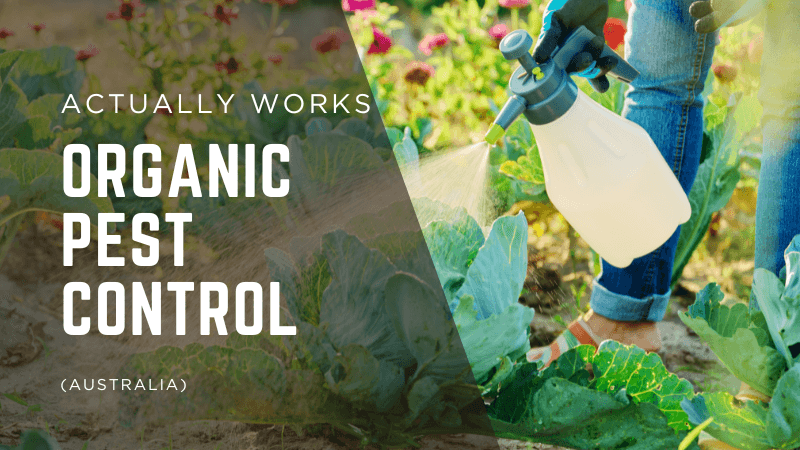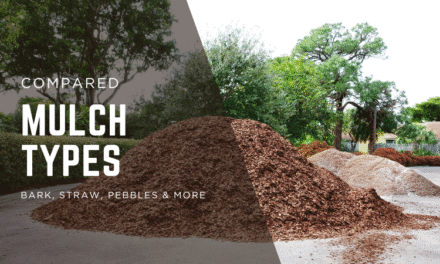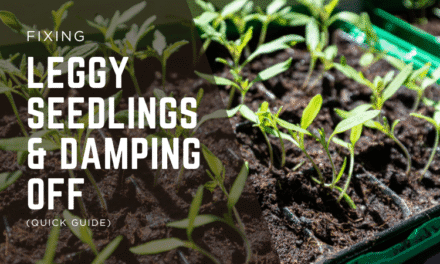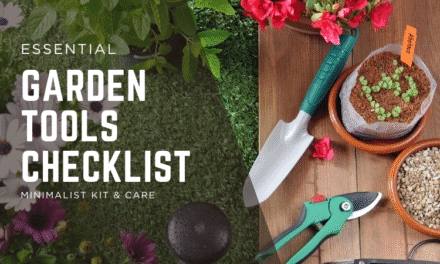If your goal is tasty harvests without harsh chemicals, organic pest control is not a single product—it’s a sequence. You prevent problems with spacing and timing, exclude the worst offenders with simple barriers, then spot‑treat only when a threshold is crossed. This article focuses on Australian backyards and balconies, with a practical identification guide, barrier tactics, biological helpers and responsible, low‑tox sprays.
Start with Prevention
Healthy plants repel trouble. Stressed plants send out biochemical distress signals that literally attract pests. You can head off most outbreaks by giving plants the conditions they’re bred for.
- Spacing and airflow: crowded leaves trap humidity and invite fungal disease. Follow packet spacing and thin early.
- Water the soil, not the leaves: morning irrigation means the canopy dries quickly and disease pressure stays low.
- Match crop to season: heat‑sensitive greens bolt and invite aphids in summer; give them shoulder seasons or afternoon shade.
- Diverse beds: interplant flowers and herbs so predators (lady beetles, lacewings) always have nectar and habitat.
Organic Pest Control: Know Your Usual Suspects (AU Focus)
Accurate ID saves money and time. Focus on what actually shows up where you live.
- Cabbage white butterfly (caterpillars) on brassicas—shot‑holed leaves and frass pellets.
- Aphids clustering on soft new growth of many crops; ants may ‘farm’ them for honeydew.
- Slugs and snails chewing seedlings in cool, moist weather; shiny trails at dawn.
- Fruit fly (QLD fruit fly in many warmer regions) stinging tomatoes, capsicums, stone fruit.
- Two‑spotted mites during hot, dry spells—fine webbing and stippled leaves on beans, cucurbits.
- Citrus leaf miner in warm months—serpentine tunnels in young citrus leaves.
Barriers & Cultural Controls First

The backbone of organic pest control is exclusion and hygiene. Netting a bed is often faster and safer than spraying anything at all.
- Insect netting over brassicas from day one to block egg‑laying (choose fine mesh; secure edges).
- Beer traps or iron‑based pellets for slugs/snails (pet‑safer options compared with metaldehyde).
- Sticky cards to monitor flying pests—place low for fungus gnats, higher for whitefly/leaf miner adults.
- Crop rotation across seasons to interrupt pest cycles; avoid putting brassicas in the same spot twice in a row.
- Companion flowers (alyssum, dill, coriander, native daisies) to feed beneficial insects year‑round.
- Garden hygiene: pick up fallen fruit (fruit fly magnets), remove heavily infested leaves, and empty water‑holding saucers where mozzies breed.
Targeted Low‑Tox Options (Use Only as Labelled)
If an outbreak crosses your threshold (e.g., seedlings in danger or fruit at risk), use targeted products with care. Always read Australian labels and local regulations; avoid open flowers and bee activity periods; and spot‑treat rather than blanket‑spray.
- Horticultural oils and potassium soaps knock down soft‑bodied pests like aphids and mites—coat, don’t drench; repeat as per label.
- Bacillus thuringiensis (Bt) for caterpillars on edibles; it’s selective for caterpillars when used correctly.
- Protein lures, baiting and traps for fruit fly; in high‑pressure zones, pair with exclusion netting for reliable results.
- Low‑tox ant control: manage ant trails that ‘farm’ aphids by using baits away from beds; remove sticky honeydew sources.
Tip: test any spray on one plant first to check for leaf burn, especially in heatwaves. Rinse residues off edible leaves before harvest.
ID → Action Cheat Sheet
- Aphids → First blast with water; if still heavy, apply oil or soap; keep flowers nearby for predators.
- Caterpillars on brassicas → Inspect leaf undersides at dusk; hand‑pick; apply Bt per label; net next crop from day one.
- Leaf miners (citrus/veg) → Remove worst leaves; improve vigour; use sticky cards to monitor adult flies; avoid over‑fertilising soft flush.
- Fruit fly → Hygiene (pick up fruit), baiting, protein lures, and netting; harvest promptly.
- Mites in heat → Increase watering consistency and humidity slightly around plants; apply oils/soaps carefully; add shade in extreme heat.
Weather & Outbreaks (Plan Ahead)
Australian weather swings predict what shows up next. Prepare before the surge.
- Extended rain → slugs/snails thrive: set traps, lay boards for morning collection, use iron‑based pellets sparingly.
- Heatwaves → mites and sap‑suckers spike: increase airflow, hose dust off foliage, avoid oil sprays in the hottest part of the day.
- Humid spells → fungal disease risk rises: water mornings, thin dense growth, and consider resistant varieties next season.
Beneficial Insects & Habitat
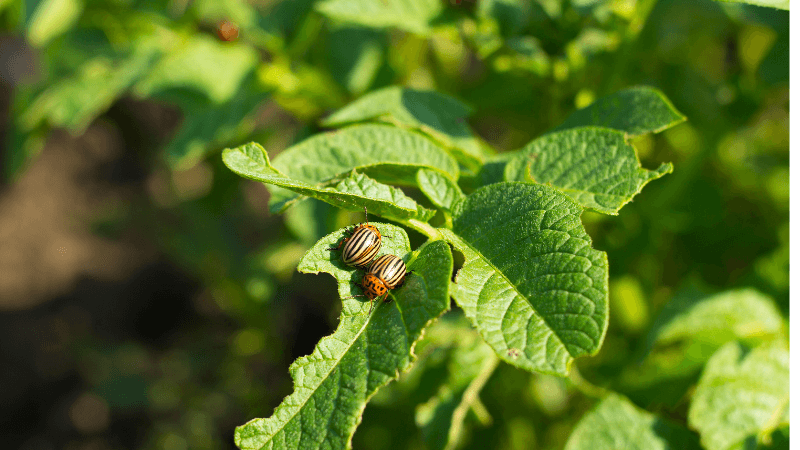
The most cost‑effective organic pest control is recruiting free labour. Predators and parasitoids need nectar, shelter and a chemical‑free hunting ground.
- Plant strips of alyssum, dill, coriander, tansy, and local natives to create season‑long nectar.
- Leave small patches of habitat undisturbed (leaf litter, stems) so predators can overwinter and breed.
- Minimise broad‑spectrum products; they kill helpers as well as pests and often cause rebound outbreaks.
Labels, Safety & Australian Compliance
In Australia, always confirm that a product is registered for your target pest and crop. Follow label directions, withholding periods and bee‑safety warnings meticulously. If in doubt, your local nursery or council can confirm current guidance. Keep sprays off open blossoms and avoid treatment during active pollinator hours.
Your 30‑Minute Weekly Routine
This is the highest‑ROI habit in organic pest control. Do it once a week—twice during peak season—and problems almost never get big.
- Walk each bed with a bucket and scissors: remove damaged leaves (bin or hot compost).
- Check the underside of leaves on brassicas, tomatoes and cucurbits; hand‑pick pests or eggs.
- Tap foliage over white paper to spot tiny mites and thrips; act early if counts jump.
- Check traps (slug boards, fruit fly lures, sticky cards) and refresh as needed.
- Water schedule audit: soil should be moist 15–20 cm down; adjust runtimes rather than frequency.
When to Do Nothing
Low levels of chewing and spotting are normal in a living garden. Focus effort on young plants and high‑value crops. Tolerate minor blemishes on mature kale or zucchini; save interventions for outbreaks that threaten yield or survival.
Regional Notes (Zones & States)
Pressure varies by climate and season. Use these quick cues to adjust tactics.
- Tropical & Subtropical (QLD, NT, north WA): fruit fly and humidity‑driven diseases are the main risks—prioritise netting, lures and airflow.
- Temperate/Mediterranean (NSW, SA, WA south‑west): summer heat drives mites and sap‑suckers; mulch and morning watering help; watch windburn.
- Cool/Alpine (VIC, TAS, ACT/highlands): slugs/snails and brassica caterpillars dominate; deploy nets early and use iron‑based baits after rain.
Design, Accessibility & Ergonomics
Make your space easy to manage on your most tired day. Good design prevents skipped checks, and skipped checks cause outbreaks.
- Wide, clear paths: no plants rubbing your legs; fewer hitch‑hiking pests.
- Bed width you can reach without stepping in: compaction and hidden pests both drop.
- Tools visible and at chest height: a small tote with gloves, secateurs, a hand lens and sticky cards saves minutes every visit.
- Irrigation valves near taps: turning zones on/off should take seconds, not a walk across the yard.
Organic Sprays: Responsible Use in Context
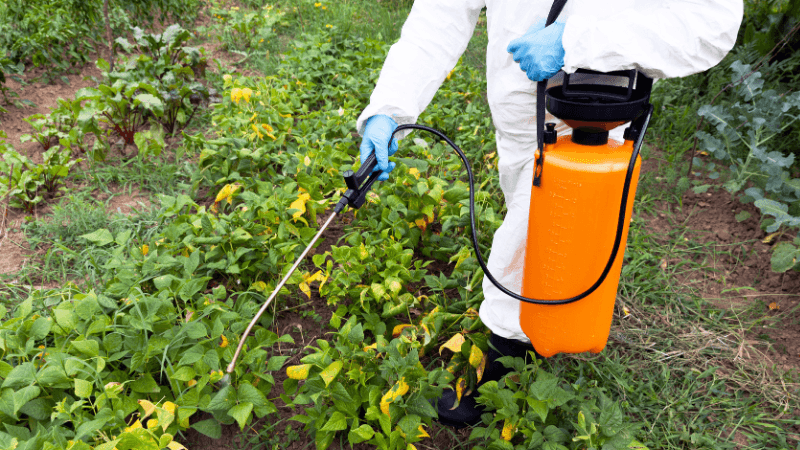
Sprays have a place in organic pest control, but the goal is less, not more. You should be able to keep most beds productive with barriers and hygiene alone. If you do spray, choose the least disruptive option, apply precisely, and stop as soon as thresholds fall.
Research‑Backed Practices
Decades of horticulture research point to the same fundamentals: maintain surface cover, increase organic matter gradually, water deeply rather than frequently, and avoid disturbing wet soils. For home gardeners that translates into mulch, compost, drip irrigation where possible, and patient observation. These habits reduce plant stress—the root cause of most pest pressure.
Local Sourcing & Sustainability
Sourcing amendments locally reduces cost and supports soil biology adapted to your climate. Blended green‑waste compost from municipal programs, well‑aged manures, and autumn leaves can outperform boutique bagged products when applied with care. Close loops: compost kitchen scraps, retain leaves as mulch, and return soft trimmings to beds after chop‑and‑drop.
Record‑Keeping & Continuous Improvement
A pocket notebook or phone log is a superpower. Track sowing dates, first pest sightings, what you did, and how long it took to rebound. At season’s end, review: which beds had recurring issues, which varieties resisted pests, and what timing changes helped. Small adjustments compound into a resilient, low‑maintenance garden.
Internal Links
FAQs
What is organic pest control?
It’s a layered strategy that starts with prevention and exclusion, then uses targeted, low‑tox tools only as needed. organic pest control favours netting, hygiene, and beneficial insects over blanket sprays.
Do ‘natural’ sprays mean safe for bees and pets?
Not automatically. Always read labels, avoid open flowers, and apply when bees aren’t foraging. Store products securely and dispose of rinsate responsibly.
Can I go completely spray‑free?
Often, yes—especially for leafy greens and brassicas under nets. For fruiting crops in fruit fly zones, a mix of hygiene, lures and exclusion is the most reliable path.
How do I know when to act?
Set thresholds (e.g., more than 10% of seedlings attacked; repeated fruit sting marks). Below that, hand‑pick and monitor. Above it, deploy a targeted tool.
Remember: organic pest control is a process, not a product. The more you lean into prevention and exclusion, the less you’ll ever need to spray. With smart timing and simple barriers, organic pest control becomes routine, your garden stays buzzing with life, and harvests improve season after season.

